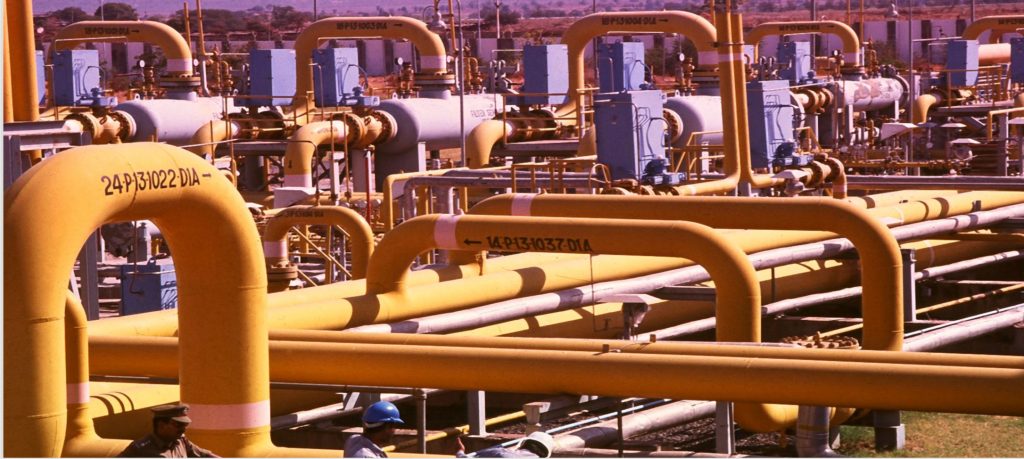Study on Natural Gas Market in Indian cement industry

What are the current sources of energy used in your industry used by different players in India?
The manufacture of cement is an energy intensive process. Coal and petcoke are the principal fuels used by the Indian cement industry to produce thermal energy to meet the requirements of its kilns and captive power plants.
The continuous volatility in fuel prices in international markets, a probable ban on the usage of petcoke, and the uncertainty over availability of domestic and linkage coal, continue to pose challenges for the cement industry as well as the Company.
An expanding economy and a growing population have resulted in increased consumption of primary energy resources such as coal, crude oil and natural gas in India. Natural Gas plays a critical role in partially bridging the gas supply gap in the country. India is currently the world’s fourth-largest importer of LNG, behind Japan, South Korea and China.
The various sources of energy used in cement industry are Coal and petcoke, Waste Heat Recovery, Alternate Fuels and Renewable energy (Wind, Solar, Hydel)
What is the delivered cost of energy in your industry and how this varies by location in India?
Power and Fuel costs in Cement Industry account for more than 50% of the Cost of production and around 20% of Revenue.
| Energy Parameter | Cement Industry |
| Power & Fuel Cost | 800-1200 INR/ton clinker |
| Thermal Energy | 700-750 K Cal/t Clinker |
| Electrical Energy | 70-80 Kwh/t Cement |
| WHRS Capacity | 5-10 MW per plant |
| Consumption of Alternative Fuel | 5% |
| Renewable Energy | Wind, Solar, Hydel |
| Petcoke Consumption | 50-85% |
Coal for some cement plants has to be hauled for more than 1500 kms adding energy bill on this account besides straining already overloaded rail infrastructure. The cost of coal for the plants closer to coal field is much lower than plants away from coal sources. In case of imported coal, plants closer to ports have economic advantage over the land locked plants. Natural Gas is emerging as an important alternate energy source on country’s commercial energy scene.
Natural Gas has various advantages over high ash coal as fuel in rotary kiln:
- Freedom from ash contamination and hence scope of utilising marginal grade limestone
- Locating new plants closer to markets in areas with low grade limestone reserves
- Elimination of coal grinding, savings of 10-12 units of electric power/ton cement
- Better control of pyro-processing, better clinker quality
- Avoidance of high ash coal over long distances resulting relief to railways
- Cogeneration, using gas turbine exhaust in kiln
In India there are major plants in state of Gujarat, Assam and Andhra Pradesh closer to gas sources and many mini cement plants very near to gas fields
The increasing availability of Natural Gas in different areas of country in future and its emergence as an important alternate energy source hold out possibilities of its use in a number of cement plants
What potential is there for natural gas and appetite to adopt it?
India is the world’s third largest energy consumer. India – world’s 2nd largest cement market, both in production and consumption and growing at a CAGR of 4-5%. Cement Industry is 3rd industrial energy user and 2nd in industrial coal use
Energy demand of India is anticipated to grow faster than energy demand of all major economies, on the back of continuous robust economic growth. Consequently, India’s energy demand as a percentage of global energy demand is expected to rise to 11 per cent in 2040 from 5.58 per cent in 2017.
- Crude oil consumption is expected to grow at a CAGR of 3.60 per cent to 500 million tonnes by 2040 from 221.76 million tonnes in 2017.
- Natural Gas consumption is forecasted to increase at a CAGR of 4.31 per cent to 143.08 million tonnes by 2040 from 54.20 million tonnes in 2017.
India has relied on coal to power its electricity sector, liquid fuels as feed stock and oil for its transport sector. But for environmental reasons we need to focus on cleaner fuels.
Natural gas available in India can broadly be classified into two categories, viz.
- Domestic Natural Gas and
- Imported Re-gasified Liquefied Natural Gas (R-LNG).
Supply and distribution of domestically produced gas is being carried out under the policy guidelines issued by the Government Policies from time to time. The import of RLNG falls under the list of Open General License Item and the marketers are free to import LNG and sell the RLNG to customers.
Natural gas has emerged as the fuel of choice for many industries in India owing to its environmental benefits and higher economic efficiency. Benefits of natural gas relative to other fossil fuels—particularly coal and oil—at the roundtable, including its substantially lower SOx, NOx, mercury, and particulate emissions as well as the lower greenhouse gas emissions associated with gas burning, assuming that methane emissions along the natural gas supply chain can be effectively mitigated.
The dominance of oil, natural gas and coal in the global energy mix is being questioned by intensifying carbon policies, technological disruptions in mobility and, to an extent, changing energy geopolitics. A closer look at India’s energy mix reflects a clear trend towards gas and renewables
- India’s gas consumption has increased at a CAGR of 3.40 per cent between 2007 and 2017.
- Natural gas imports in India increased at a CAGR of 10.64 per cent during FY10–FY18.
India’s natural gas market is characterized by a supply deficit, primarily due to the low availability of natural gas and inadequate transmission and distribution infrastructure.
What is the long term outlook for your industry in India and the key risks/opportunities for the sector to expand?
Cement production capacity of around 455 million tonnes, as of 2017-18. India’s cement production capacity is expected to reach 550 million tonnes by 2020. India – world’s 2nd largest cement market, both in production and consumption.
210 large cement plants account for a cumulative installed capacity of over 410 million tonnes, while over 350 mini cement plants have an estimated production capacity of nearly 11.10 million tonnes.
Cement is an essential item for the construction sector and for all infrastructural projects. With the growing infrastructure expenditure and increasing industrial base, India is set to witness significant growth in its Gross Domestic Product (GDP) resulting in favorable outcome for cement industry in the coming years.





